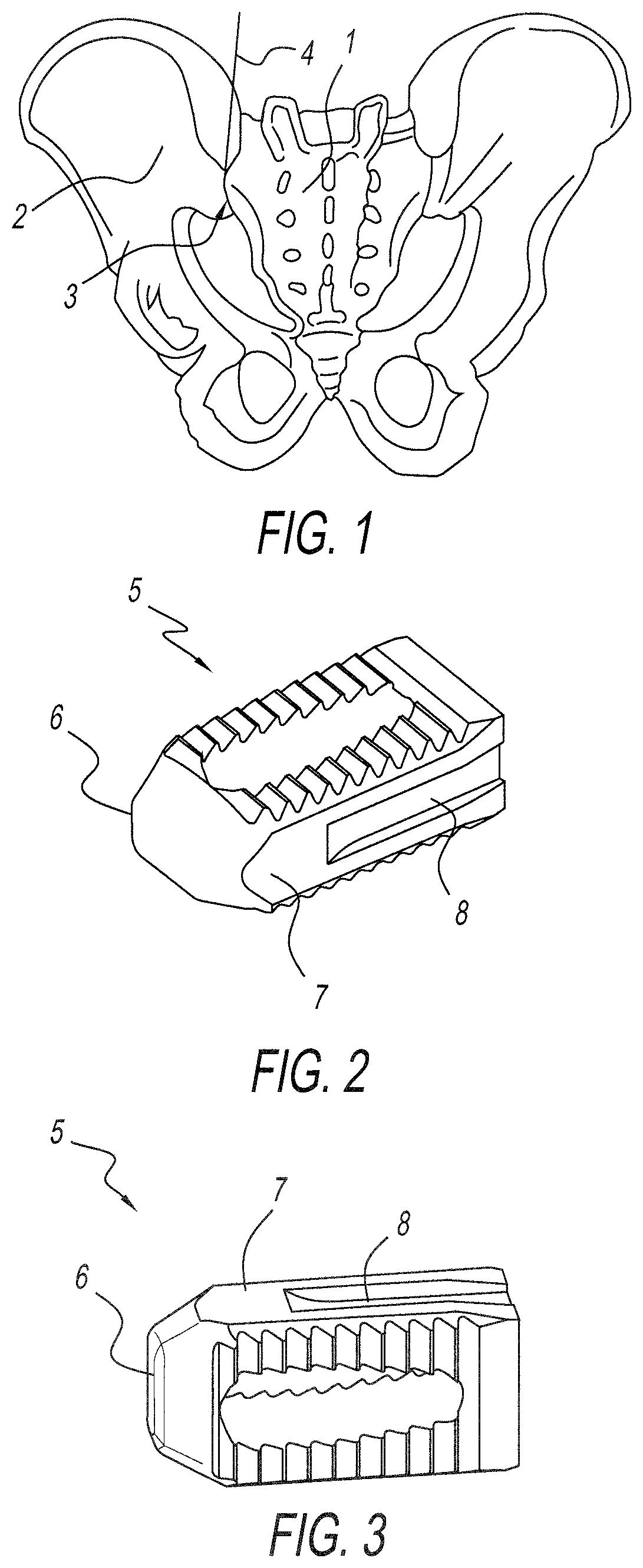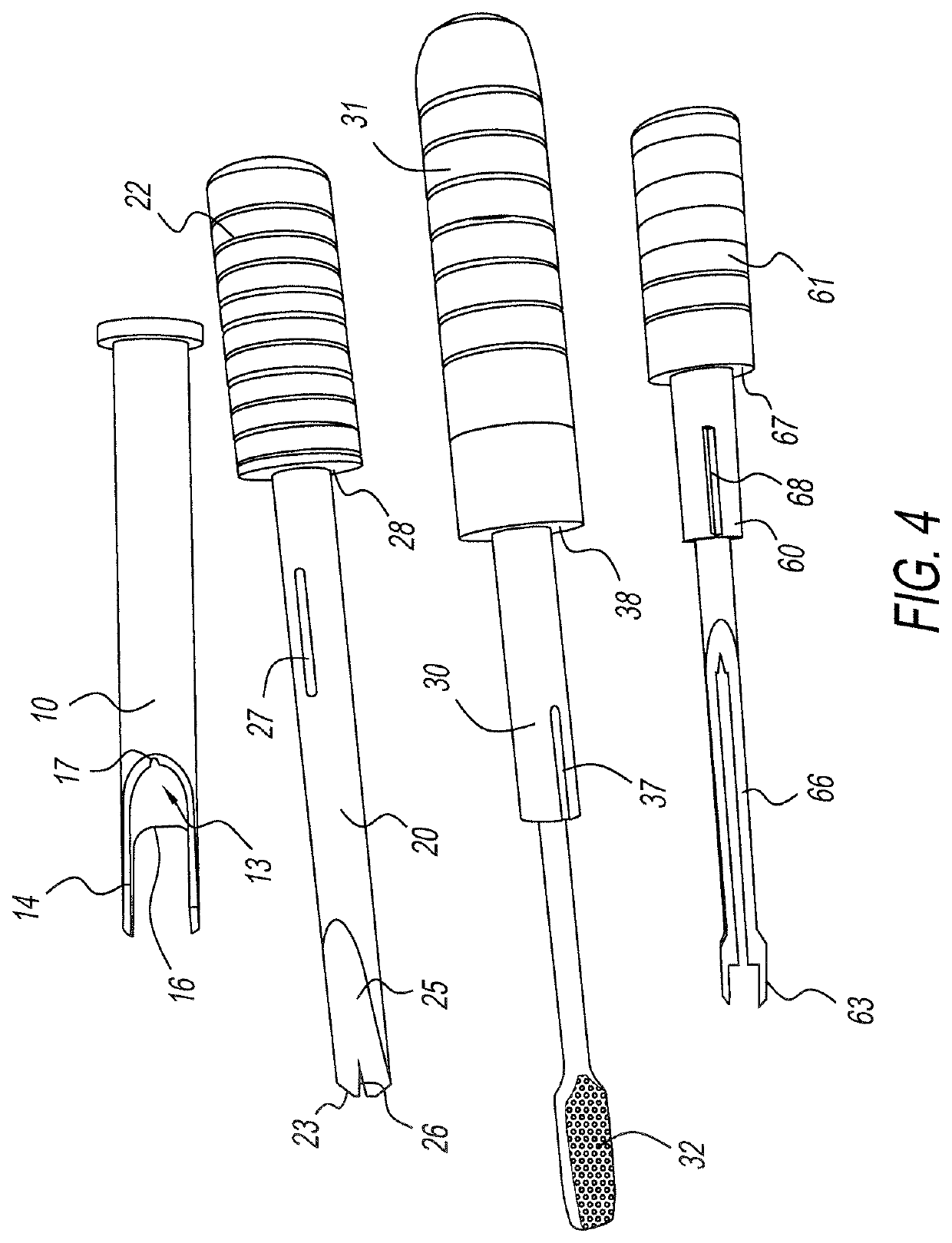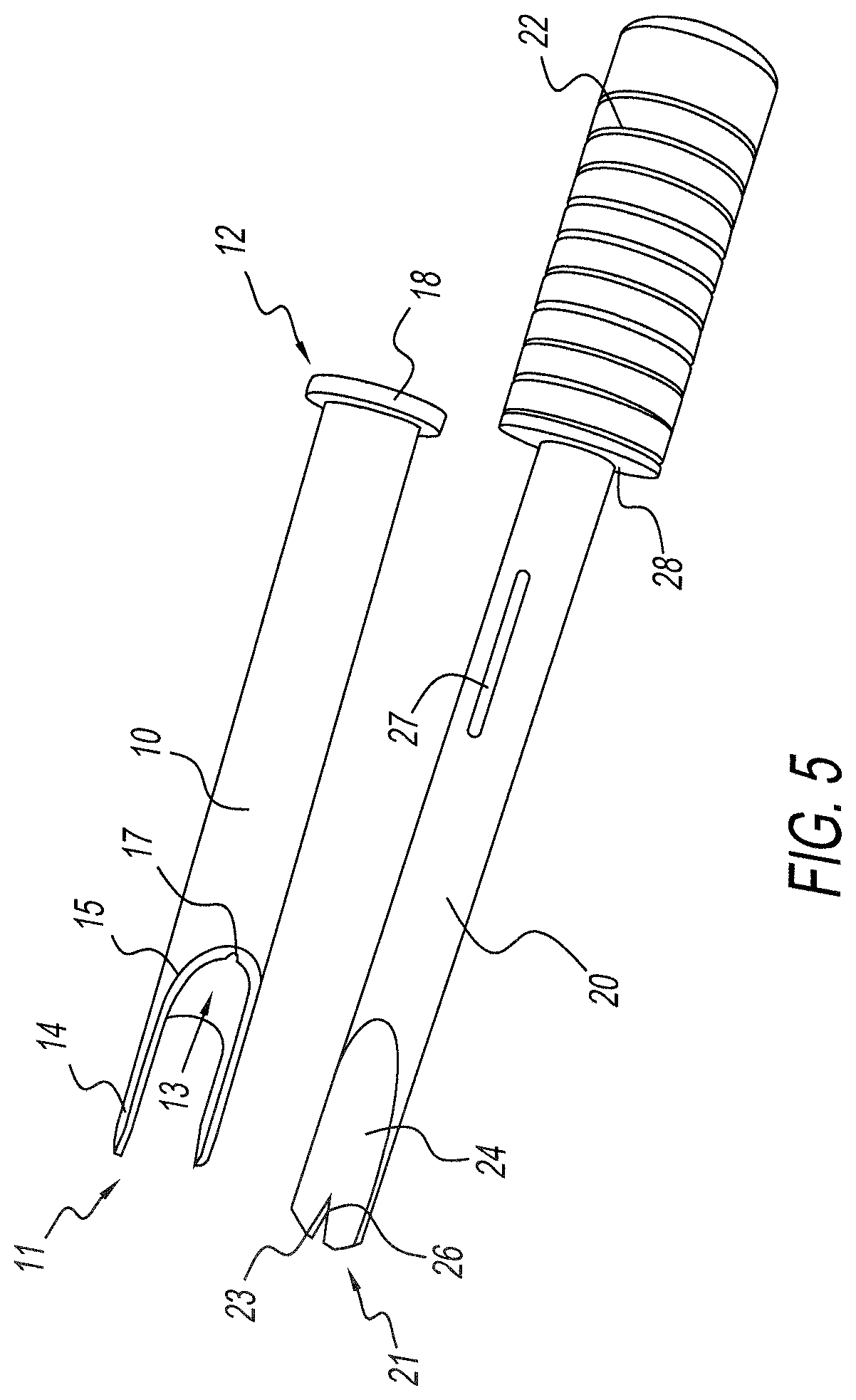Allograft implant for fusing a sacroiliac joint
a technology of sacroiliac joint and allograft, which is applied in the field of allograft implants for fusion of sacroiliac joints, can solve the problems of complex devices, si joint dysfunction, and pain in the si joint properly functioning
- Summary
- Abstract
- Description
- Claims
- Application Information
AI Technical Summary
Benefits of technology
Problems solved by technology
Method used
Image
Examples
Embodiment Construction
[0010]In the preferred embodiment, the system and instrumentation described herein comprises a working channel, a joint locator, an abrading device, and an implant inserter. The working channel has an insertion end and a working end, and a channel extending therebetween. The working channel provides a working passage for insertion of the other instruments of the system, and for delivery of the implant to the SI Joint. The insertion end has a pair of arms for providing engagement of the SI Joint and distraction of tissue surrounding the insertion end. The insertion end further comprises a first iliac contour and a first sacral contour, both of which are defined by the contour between the insertion arms and the body of the working channel. The inside surface of the working channel has an alignment means comprising a groove, recess, channel, indent, or the like for receiving and engaging a ridge, rib, detent, or other protrusion on the mating instrument that is keyed to the alignment m...
PUM
 Login to View More
Login to View More Abstract
Description
Claims
Application Information
 Login to View More
Login to View More - R&D
- Intellectual Property
- Life Sciences
- Materials
- Tech Scout
- Unparalleled Data Quality
- Higher Quality Content
- 60% Fewer Hallucinations
Browse by: Latest US Patents, China's latest patents, Technical Efficacy Thesaurus, Application Domain, Technology Topic, Popular Technical Reports.
© 2025 PatSnap. All rights reserved.Legal|Privacy policy|Modern Slavery Act Transparency Statement|Sitemap|About US| Contact US: help@patsnap.com



